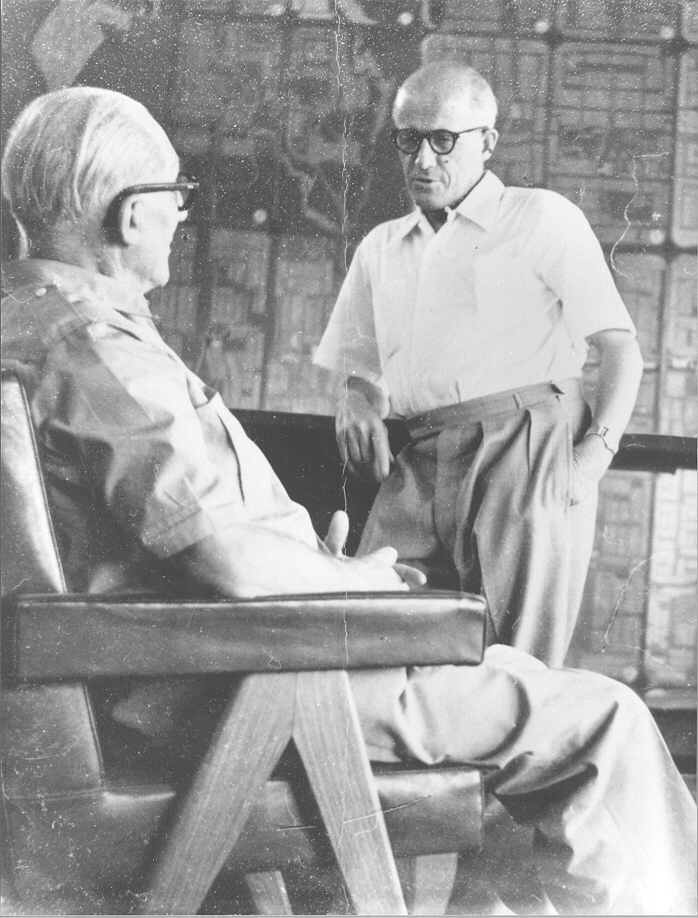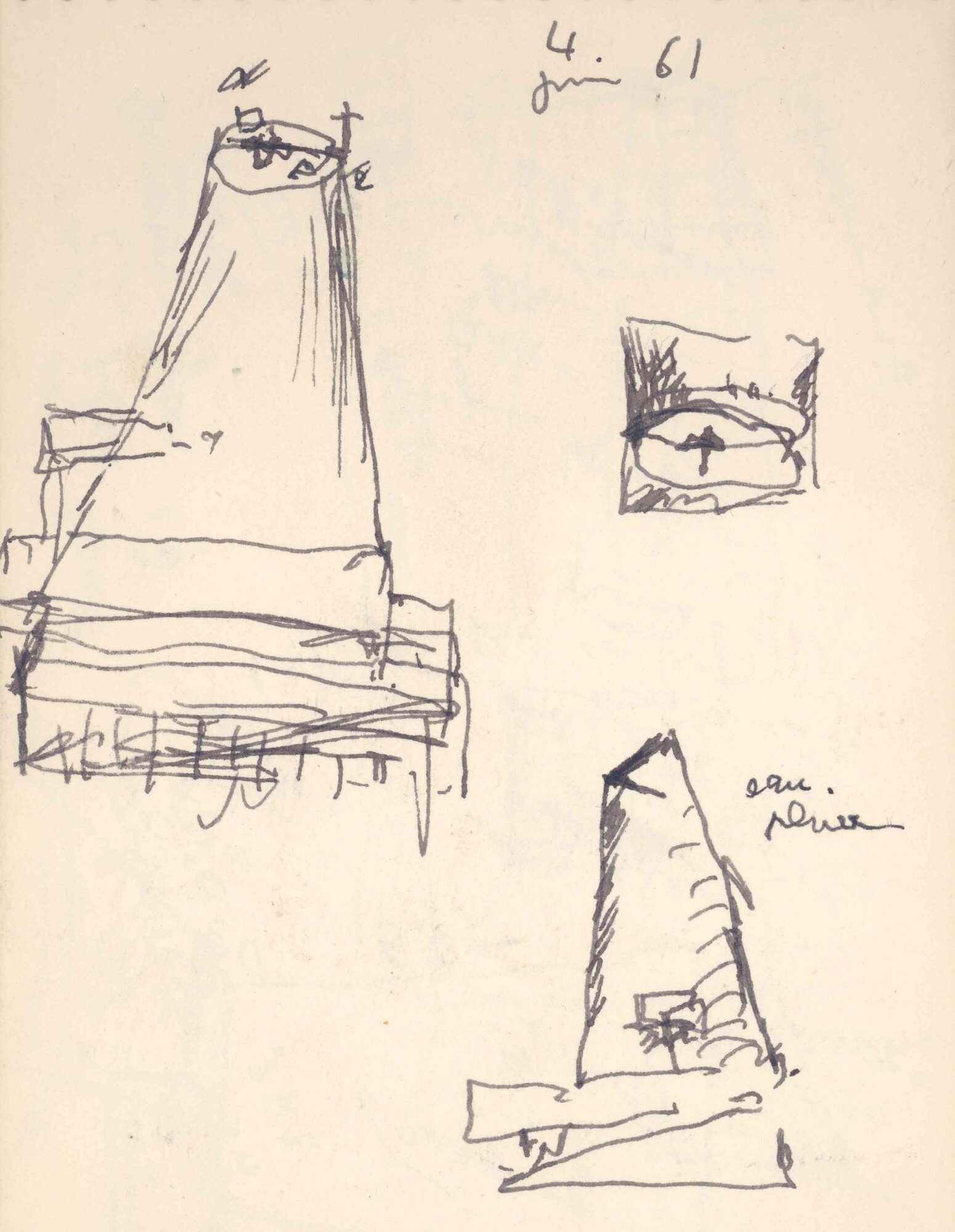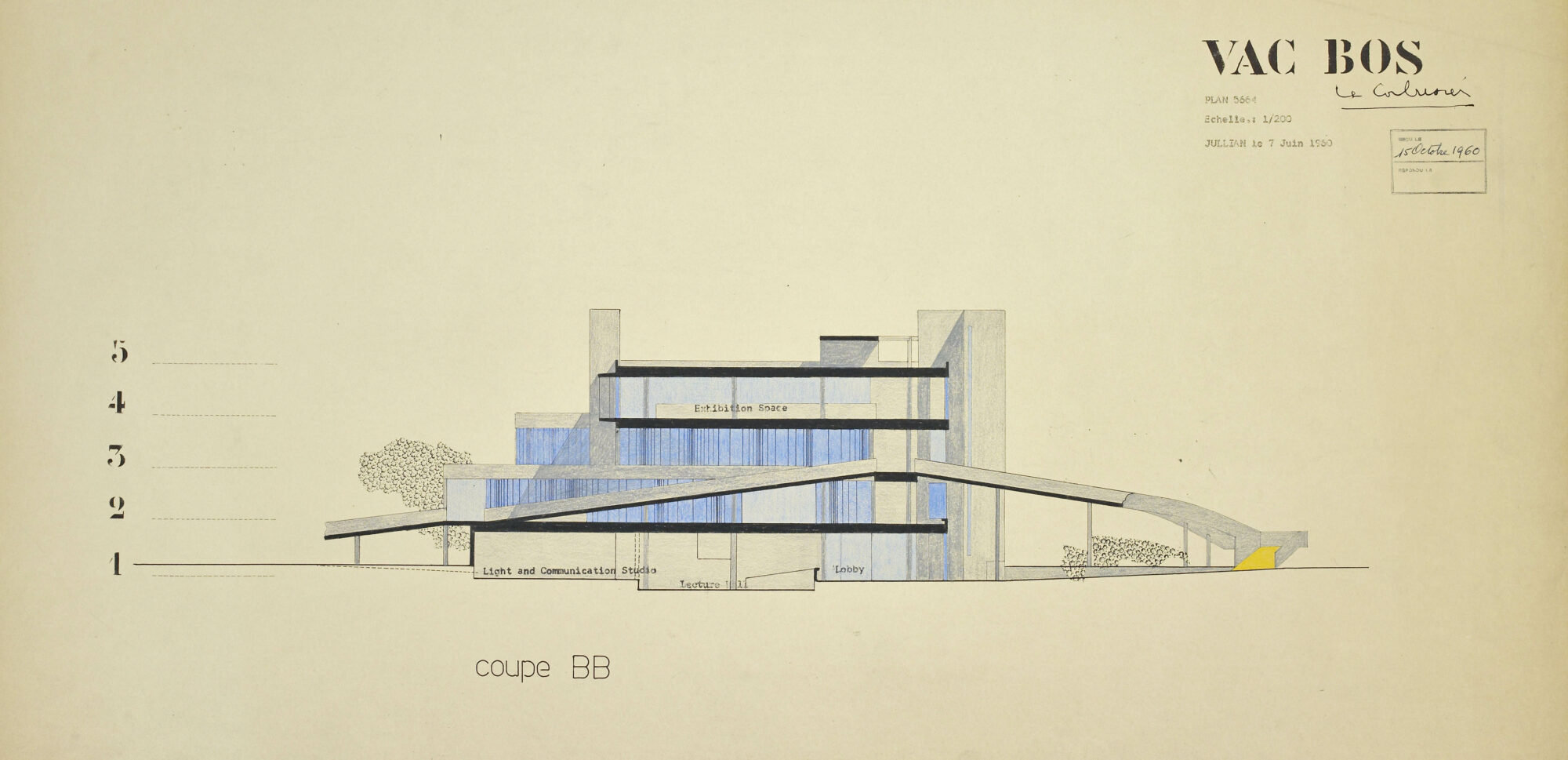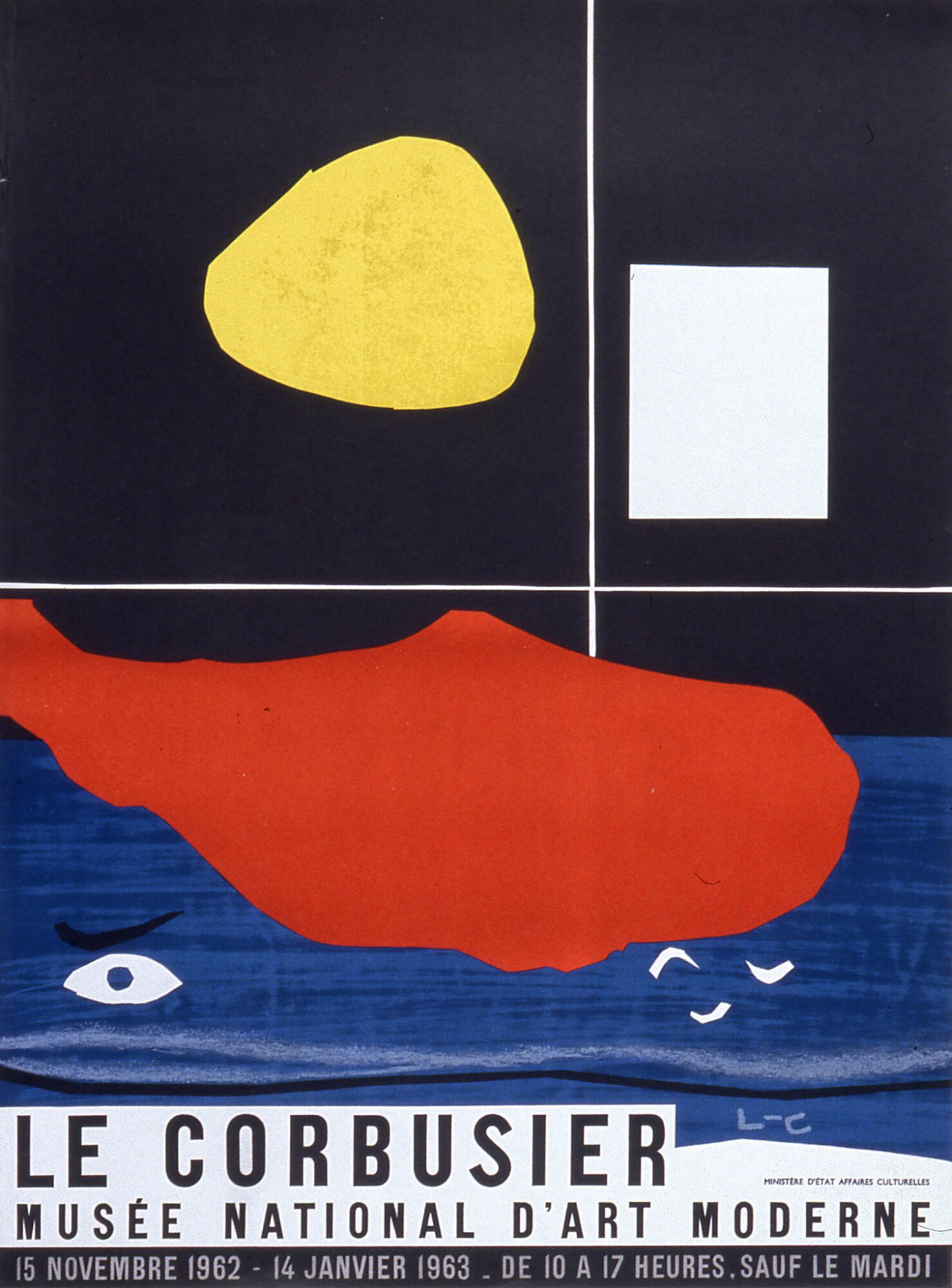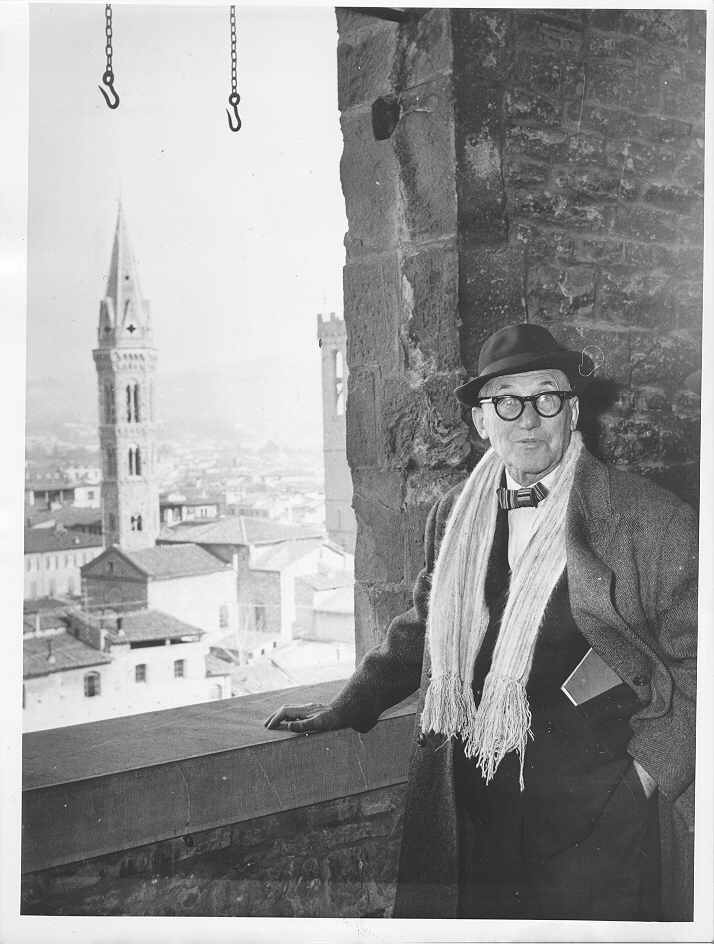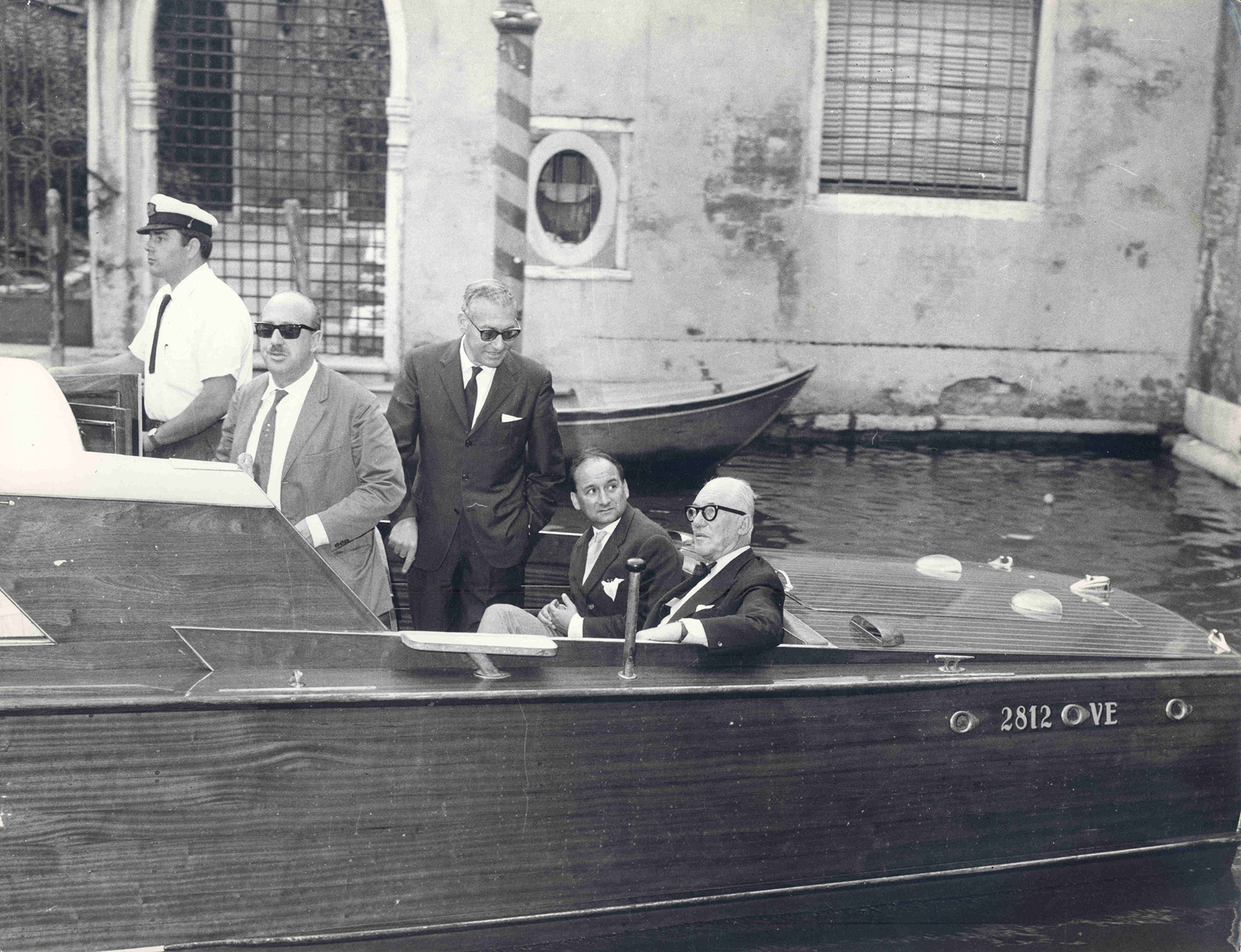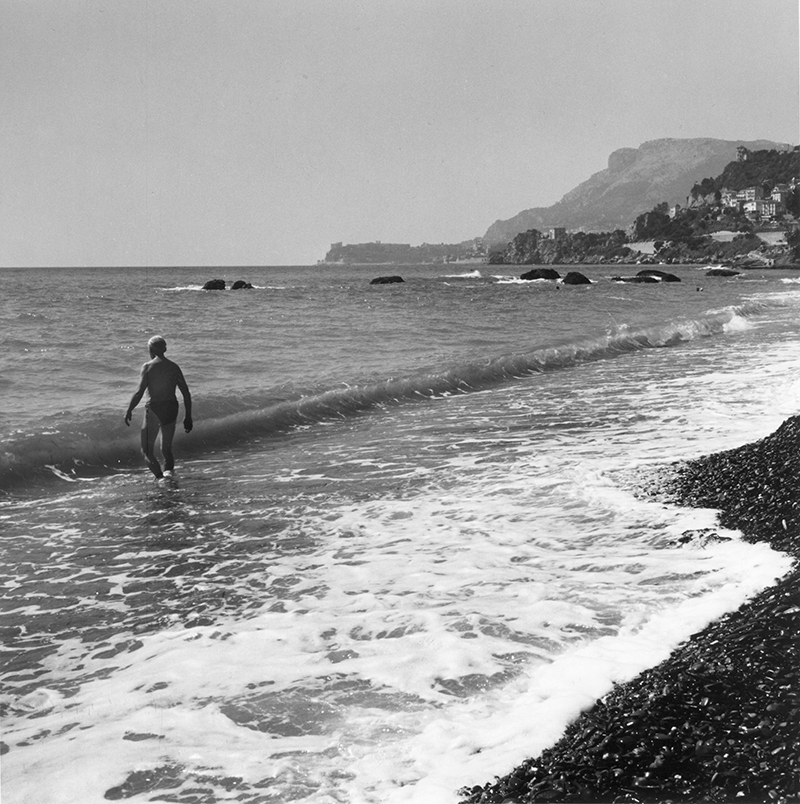
1961-1965: Recognition and legacy
On receiving the Gold Medal from the Institute of American Architects on April 27, 1961, Le Corbusier declared: “Great things are made up of a multitude of small things, and small things follow one another endlessly every day, from morning to night… Daily life is made up of perseverance, courage, modesty and difficulties […] Problems are always ahead of us… Techniques change from day to day… The world explodes. I’m going to confess something to you too: I live in the skin of a student.”
Behind this formula lies the importance of work, reflection and the assiduous, methodical resumption of his projects, as well as his determination and insight into the present and future. After the death of his mother in 1960, Le Corbusier was a weakened man. His family was now reduced to his cousin Pierre and, of course, his brother Albert.
Still obeying the steady pace of his many transcontinental travels, but also the unsuitable rhythm of a workshop with a very small number of collaborators, Le Corbusier was feeling the pinch and losing ground in the space of architectural modernity. The absence of André Wogenscky, who had gone off on his own, and the geographical remoteness of Pierre Jeanneret, who was overseeing the Indian city of Chandigarh, deprived the studio of a head of agency well-versed in the Le Corbusier method and style. As a result, overall efficiency suffered.
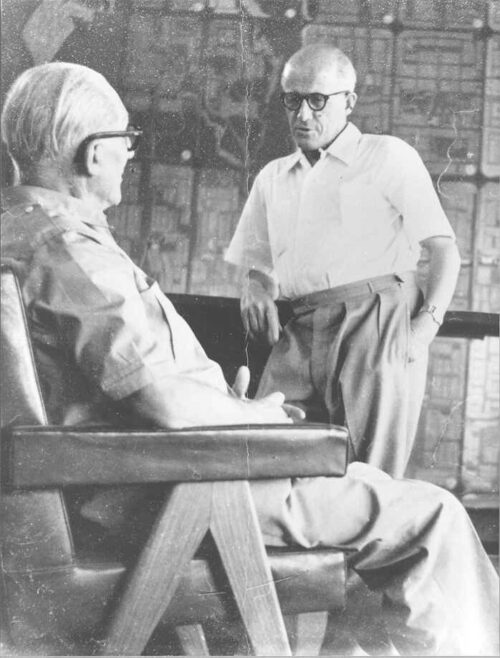
However, Le Corbusier still had the capacity to respond and surprise formally, leaving aside a few occasional projects, such as the one planned for the Gare d’Orsay. He continues to design major projects such as the Carpenter Center in Cambridge and the ZHLC (Maison de l’Homme) exhibition pavilion in Zurich, which was already in its final stages in the Pavillon Nestlé of 1927. The same is true of the Olivetti project, which still retains the overtones of the debates surrounding the concept of machinist civilization. These latter works sometimes find their primary source at the heart of older projects, unrealized and sometimes even forgotten by most of the studio’s designers.
Apart from his plans and archives, which he continues to treasure, since the late 1950s he has been revisiting many of his works, amending them, correcting them or giving them the relevance they deserve. With Mise au point, and even more so with Voyage d’Orient (a retelling of his 1911 initiatory journey), he has brought to a close the long circumnavigation of his travels that enabled him to take a singular look at the world. He applies a similar method to his painting, drawing on themes, motifs and canvases from the twenties, thirties, forties and fifties.
Committed to thinking about the future of society and its evolution, Le Corbusier was also thinking about his own finitude. He envisioned and designed the Foundation that would succeed him and preserve the memory of his great work. Now alone, Le Corbusier had to guarantee the memory of his work.
Against his doctor’s advice, he went to Roquebrune-Cap-Martin in August. On August 27, Le Corbusier died of a heart attack while in his daily swim in the Mediterranean.
1961
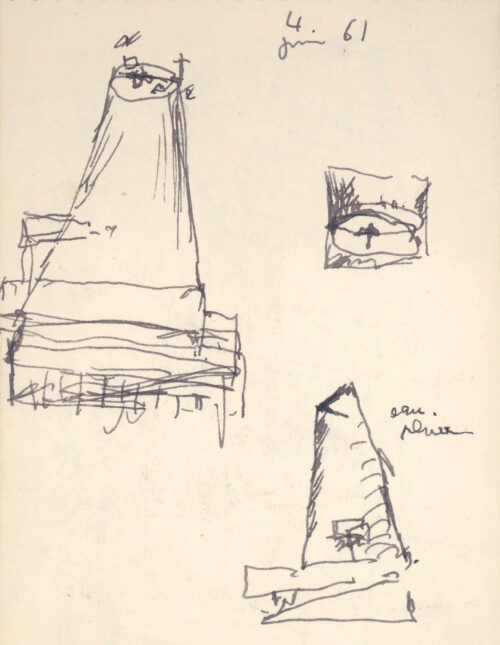
- Delivery of the Carpenter Center for Visual Arts
- Publication of Le livre de Ronchamp
- Studies begin for Eglise Saint-Pierre in Firminy
- Commander of the Order of Merit
- Gold medal from the American Institute of Architects
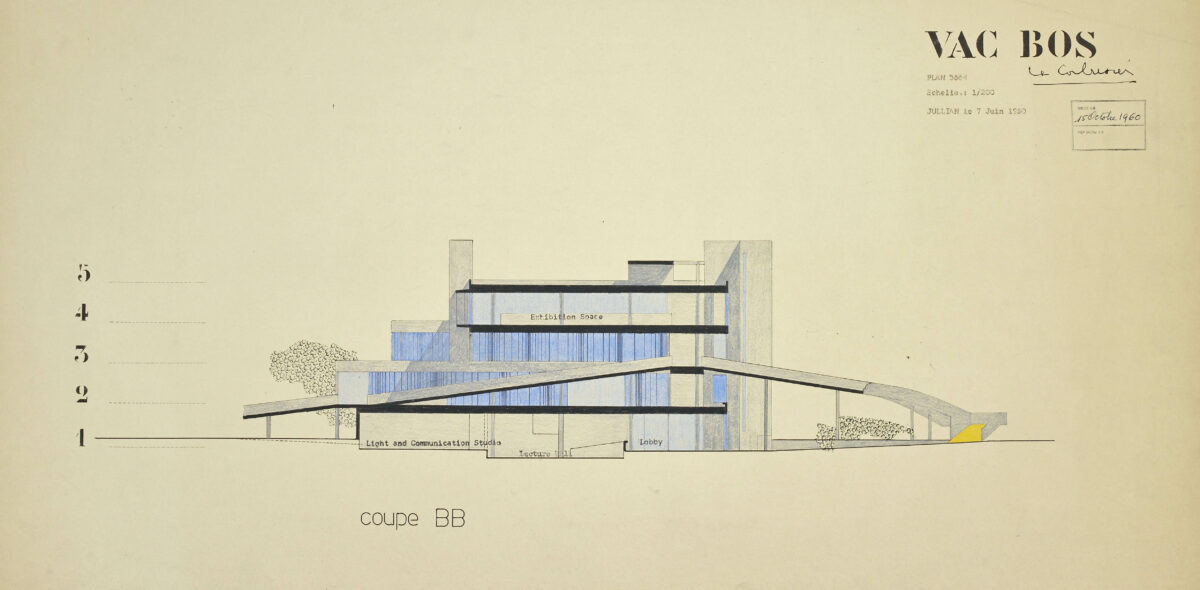
1962
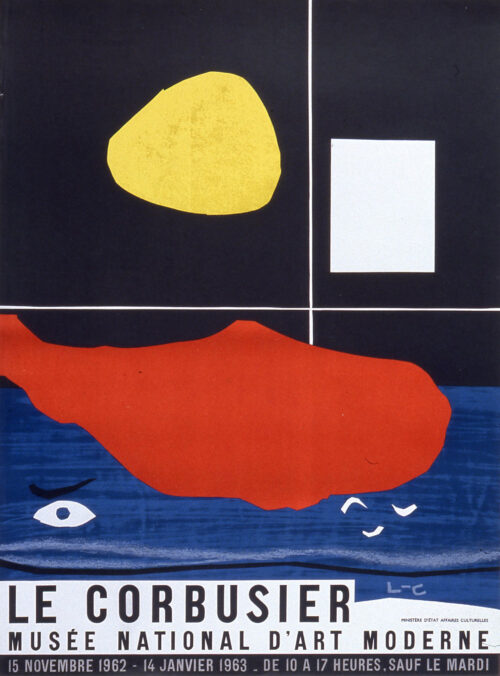
- Retrospective exhibition at the Musée national d’art moderne in Paris
- Palais de l’Assemblée inauguration in Chandigarh
1963
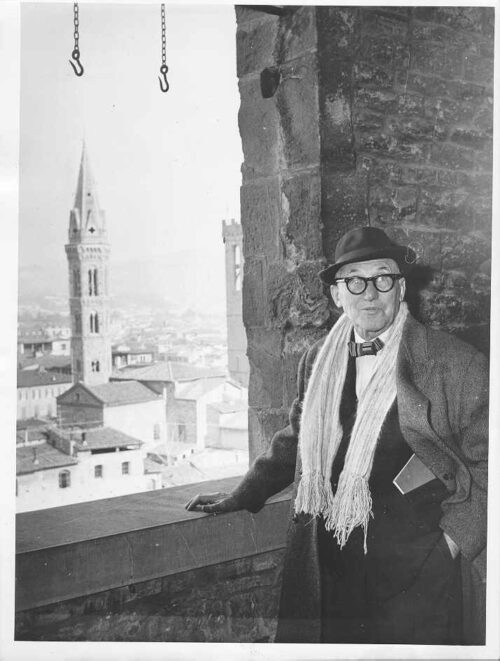
- Construction of the Maison de l’Homme. Pavillon de Zurich
- Project for the Centre de calculs électroniques Olivetti in Rho
- President Charles de Gaulle and Cultural Affairs Minister André Malraux present Le Corbusier with the insignia of Grand Officier de la Légion d’Honneur.
- Exhibition at the Palazzo Strozzi in Florence
- Honorary doctorate from the University of Geneva
- Gold Medal of the City of Florence
- Reprint of Manière de penser l’urbanisme published by Gonthier, in
1964
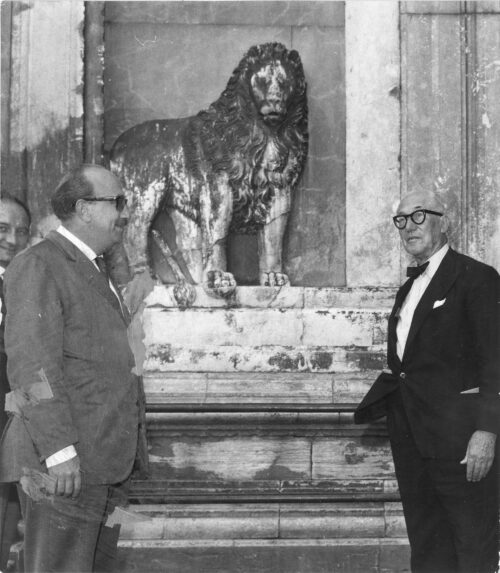
- Commissioned by the Hôpital de Venise
- Studies for the Palais des congrés in Strasbourg and the Ambasssade de France in Brasilia begin
- Reprint of La Ville radieuse
- Exhibition Artists of La Chaux-de-Fonds, from Léopold Robert to Le Corbusier
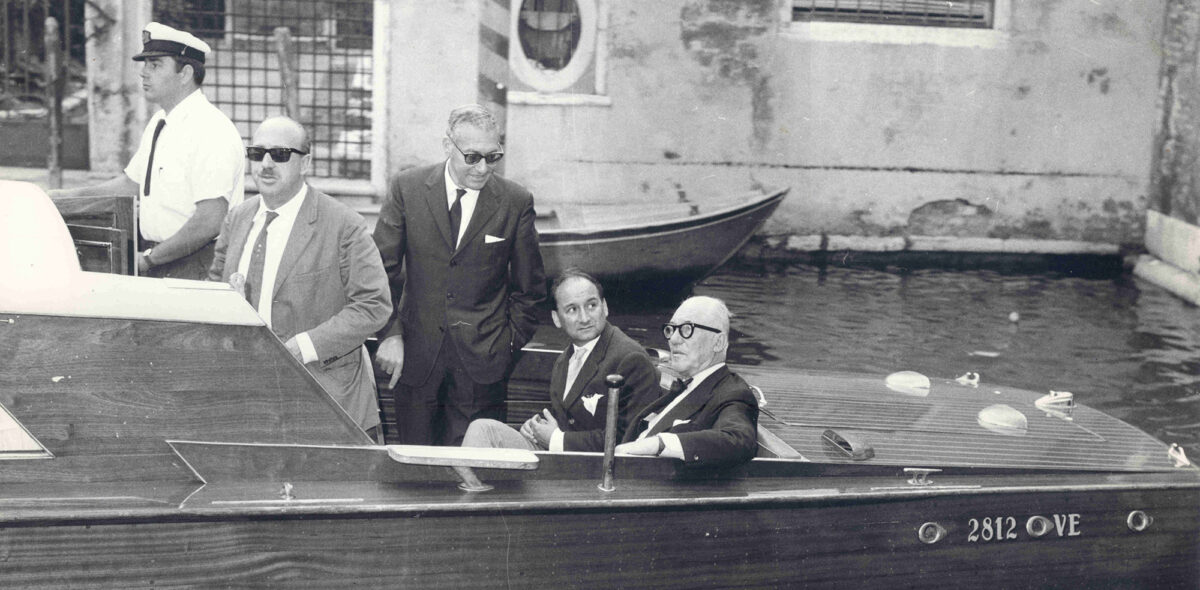
1965
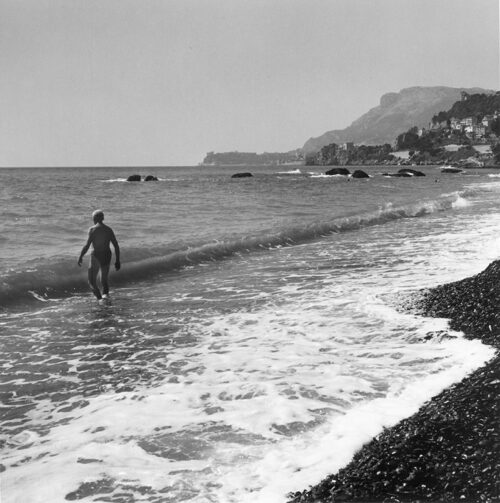
- Project for the Musée du XXème siècle at La Défense-Nanterre
- Publication of Textes et dessins pour Ronchamp
- On August 27, Le Corbusier suffered a heart attack in the Mediterranean while taking his daily swim at Cabbé beach.
- On August 31, the funeral procession left Menton; after passing through Firminy, it stopped at the Couvent de la Tourette, where Le Corbusier’s remains were laid to rest by the Dominican friars.
- On September 1, a state funeral was held in the Cour Carrée of the André Malraux delivered a funeral oration for the occasion.
